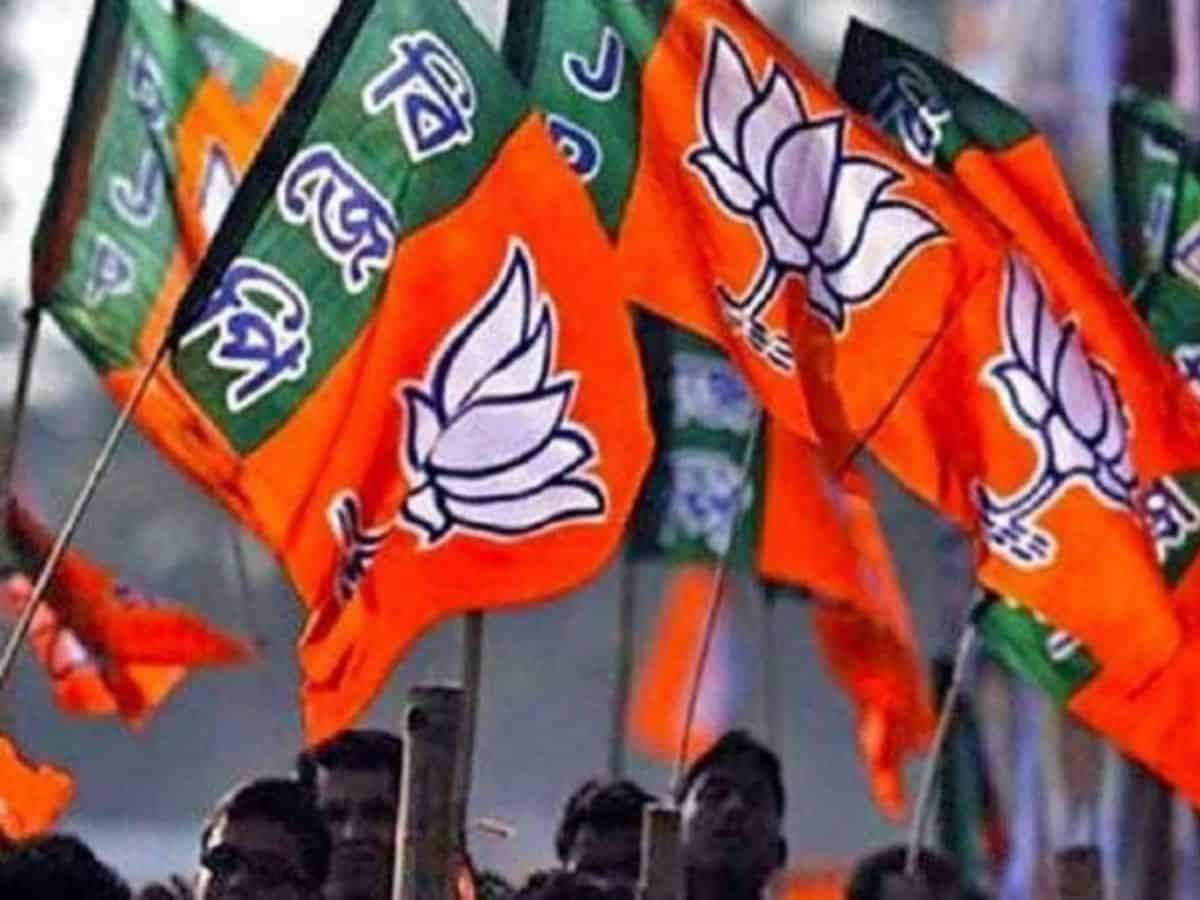
Kolkata: The West Bengal BJP, which political analysts claim is grappling with internal discord, organisational shortcomings and resurgence of the Left-Congress alliance, takes on the daunting task of securing 35 Lok Sabha seats in the national elections, hinging on CAA implementation as its key to achieve its target.
In the 2019 Lok Sabha polls, the BJP put up a stellar performance in West Bengal, clinching 18 seats and securing 40 per cent of the vote share. Buoyed by its success, the party has set an ambitious target of winning 35 seats in this election.
While the party heavily relies on the charisma of Prime Minister Narendra Modi, it also seeks to reap the benefits of the Citizenship (Amendment) Act, although political analysts warn that CAA could prove to be a “double-edged sword” for the BJP.
They opine that the CAA could unite the Hindu community, but also provoke a backlash from minority groups.
The BJP’s prospects in West Bengal also rely heavily on the momentum of the Left-Congress alliance, which has been progressively gaining strength across the state’s 42 Lok Sabha constituencies.
West Bengal BJP president Sukanta Majumdar said the party is not only hopeful but confident that it would win 35 seats in the state.
However, a section of the BJP leaders pointed out a host of both internal and external challenges that the saffron camp faces in the state on its path to achieving its target.
“The biggest challenge for the party lies in getting its organisation, which has been in tatters since the 2021 assembly polls debacle, in order. We still don’t have people to appoint booth agents in more than 80,000 booths in the state,” former BJP national secretary Anupam Hazra said.
Hazra, who shares a strained relationship with the present state leadership, claimed that internal conflicts and a lack of grassroots-level coordination have impeded the BJP’s efforts to consolidate its position in the state as reflected in the series of electoral losses since the 2021 assembly poll defeat.
Since 2021, eight MLAs and two MPs have shifted allegiance to the TMC. Only one among them, MP Arjun Singh, has returned to the BJP.
In 2019, the BJP secured 40 per cent of the vote share. However, in the 2021 assembly polls, this dropped slightly to 38 per cent. Despite a growth from 10 per cent vote share and three assembly seats in 2016 to 77 seats in 2021, they failed to seize power.
The decline in vote share began with the Bhabanipur bypoll, where it dropped from 35 per cent in May 2021 to 22 per cent in October of the same year, and this trend has persisted.
In elections to 108 other civic bodies, the BJP only managed to garner 12.57 per cent of votes.
In last year’s panchayat polls, the party secured 22 per cent of the vote share securing the third position, just one per cent less than the Left-Congress-ISF alliance.
The resurgence of the Left-Congress alliance further complicates the BJP’s electoral strategy, posing a formidable challenge to the party.
Until 2021, the shift in votes of these parties to the BJP had contributed to the saffron party’s growth in the state.
After the 2021 assembly polls, however, the Left and Congress witnessed a revival with their alliance wresting the Sagardighi seat from the TMC in the 2023 assembly by-election.
A BJP leader said the re-emergence of the Left-Congress-ISF alliance might hinder the consolidation of anti-TMC votes in the saffron party’s favour, especially in south Bengal constituencies.
“As the Left and Congress did not fight the 2019 polls in alliance in West Bengal, we had a clear path to garner the entirety of the anti-TMC votes. However, in a three-cornered contest, these votes are likely to be divided,” remarked the senior BJP leader.
“A triangular contest could, however, also offer opportunities to the BJP in certain seats, particularly if minority votes are divided. The impact of the Left-Congress-ISF alliance was evident in minority-dominated seats, as seen in the Sagardighi bypoll,” he said.
The consolidation of anti-TMC votes led to a remarkable surge in the BJP’s vote share from 17 per cent in 2014 to 40 per cent in 2019, while its seat tally rose from two to 18.
While the TMC’s vote share increased by three per cent to reach 43 per cent, the count of its parliamentary seats declined from 34 to 22.
The BJP leaders, however, hope to capitalise on polarisation in the majority community, particularly in Matua-dominated constituencies, by leveraging CAA as a pivotal issue.
Majumdar asserted “CAA will help the BJP sweep the elections in the state”.
On the flip side, the BJP, which does not have a robust organisational strength like that of the TMC, has not been successful in countering the TMC’s campaign on the ground against the CAA that it would take away citizenship.
Making things worse, the All India Matua Mahasangha, a key organisation of the Matua community, has advised its members to apply for Indian citizenship under the new law only after the new government assumes charge at the Centre.
“The TMC is trying hard to mislead the masses on CAA, but they won’t succeed,” Majumdar said.
The BJP is also banking on the Sandeshkhali issue, where locals have accused TMC leaders of sexually abusing women in the area.
In north Bengal, a strong base for the BJP which had won seven of the eight seats in the region in 2019, there is growing dissatisfaction over the distribution of tickets.
Political scientist Sabyasachi Basu Ray Chaudhury said that the impact of implementing the CAA is still unclear.
“BJP could either benefit from the CAA or it could backfire,” he said.
Political analyst Subhomoy Maitra said the BJP’s electoral performance depends on how the Left-Congress alliance performs.
“The alliance’s potential to cut into anti-TMC votes in the state holds the key to BJP’s success,” he said.
